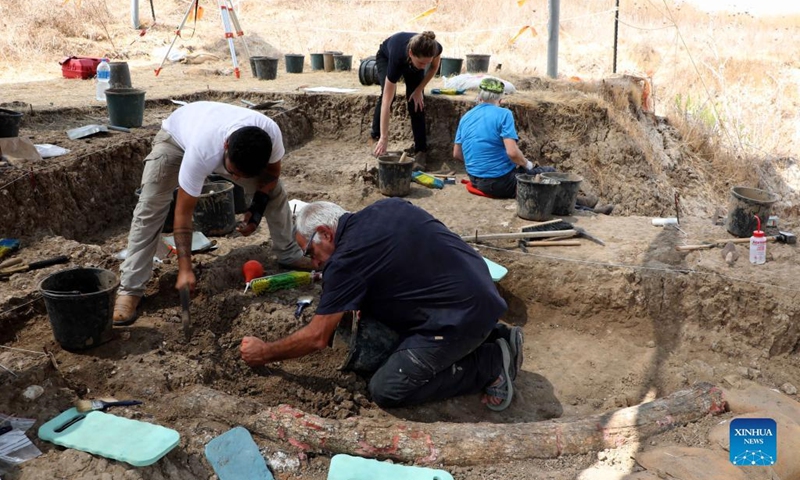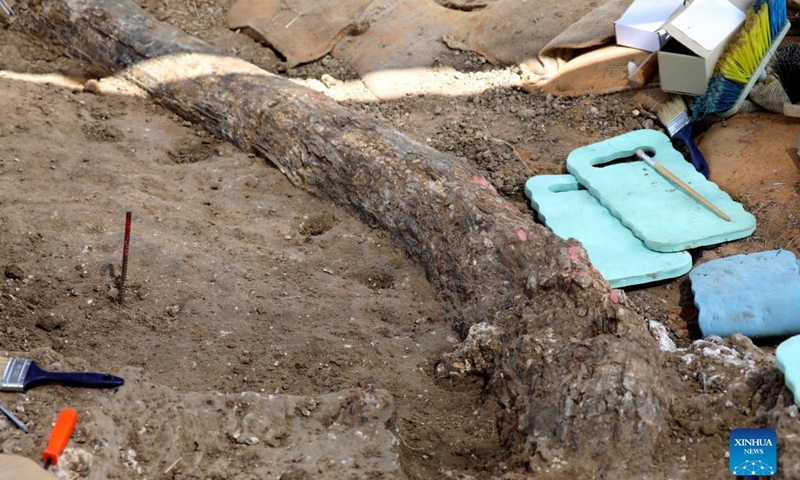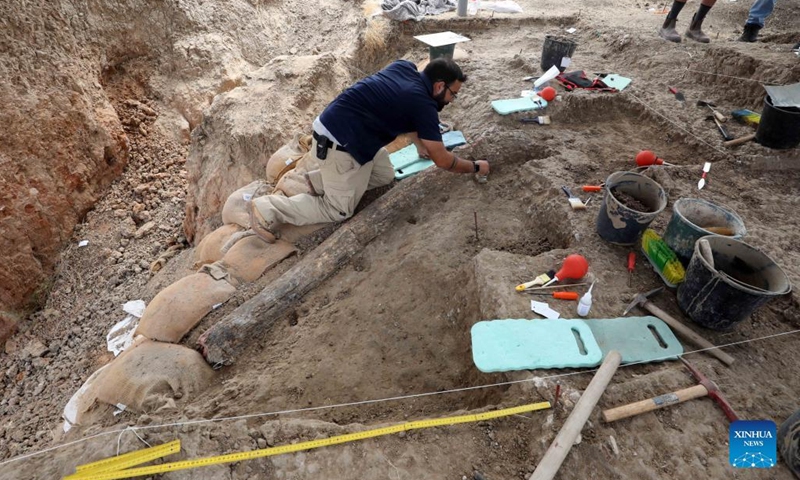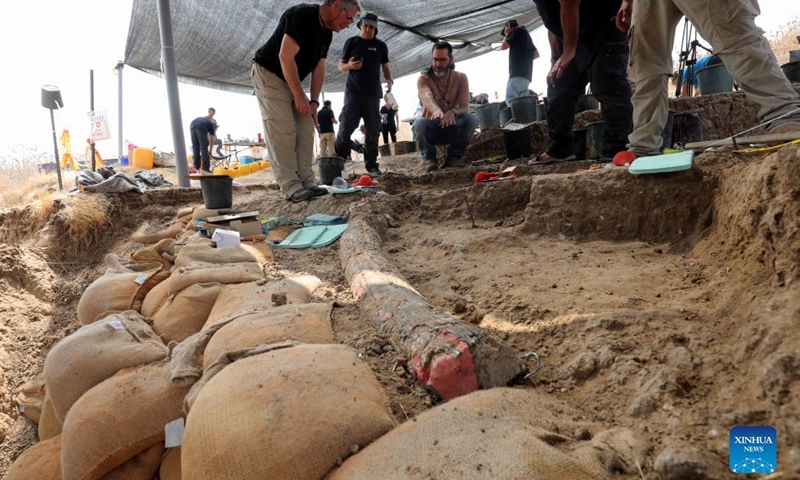Archaeologists work at the discovery site near Kibbutz Revadim in southern Israel on Aug. 31, 2022. A 500,000-year-old elephant tusk was discovered in Israel’s southern coastal plain, the Israel Antiquities Authority (IAA) announced Wednesday.(Photo: Xinhua)

Archaeologists work at the discovery site near Kibbutz Revadim in southern Israel on Aug. 31, 2022. A 500,000-year-old elephant tusk was discovered in Israel’s southern coastal plain, the Israel Antiquities Authority (IAA) announced Wednesday.(Photo: Xinhua)

Photo taken on Aug. 31, 2022 shows part of the unearthed tusk at the discovery site near Kibbutz Revadim in southern Israel. A 500,000-year-old elephant tusk was discovered in Israel’s southern coastal plain, the Israel Antiquities Authority (IAA) announced Wednesday.(Photo: Xinhua)

An archaeologist works at the discovery site near Kibbutz Revadim in southern Israel on Aug. 31, 2022. A 500,000-year-old elephant tusk was discovered in Israel’s southern coastal plain, the Israel Antiquities Authority (IAA) announced Wednesday.(Photo: Xinhua)
A 500,000-year-old elephant tusk was discovered in Israel’s southern coastal plain, the Israel Antiquities Authority (IAA) announced Wednesday.

This gigantic species apparently appeared in the region about 800,000 years ago and became extinct 400,000 years ago, it added.
Previous archaeological findings showed the excavation site dates back to the late Lower Paleolithic period, as flint tools and bone remains of wild cattle, hippopotami, deer, wild boars and wild horses were discovered at the site.
“This is the largest complete fossil tusk ever found at a prehistoric site in the Near East,” said IAA prehistorian Avi Levy, the director of the excavation.
The archaeologists are studying whether the tusk, detached from the skull and the rest of the body, is a remnant of a hunted elephant or was collected by the local prehistoric inhabitants, and whether it had social or spiritual significance.